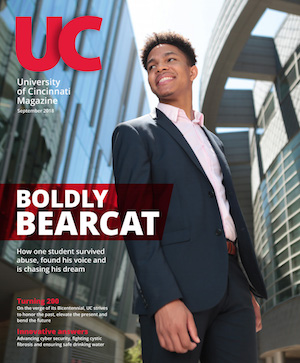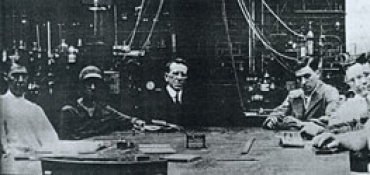Back in the early 1920s, University of Cincinnati undergraduate George Sperti, Eng '23, grabbed the attention of engineering dean Herman Schneider by inventing an electric meter capable of measuring massive quantities of electricity, as consumed by industries. After selling the patent to Westinghouse Electric Corp. for a whopping $30,000, Sperti turned down numerous high-paying offers and remained at UC as a research assistant.
In 1925, he started a research laboratory, known as the Basic Sciences Labratory, in the basement of Old Cunningham Hall, then moved the growing facility to the larger attic in neighboring McMicken Hall. Before his 30th birthday, the renowned Sperti had led a research team in discovering the ultraviolet wavelengths that make vitamin D. Next were numerous patents in selective radiation used to create vitamins, kill bacteria, preserve foods such as orange juice and invent the sun lamp and Aspercreme.
His process for irradiating milk to increase its vitamin D content was bought by General Foods for $300,000. He donated the money to the university to further the work of the laboratory.
In 1935, Sperti founded the Institutum Divi Thomae, a tuition-free research school in Cincinnati attracting international students. Following years of cancer research, the school discovered a cell derivative to stimulate healthy-cell growth; named it Bio-Dyne, from the Greek words bios (life) and dyne (force); and used it in Sperti Ointment, later renamed Preparation H.

 Past Issues
Past Issues
